A few days ago, in Huelva, Planasa presented its new short-day strawberry varieties for the Mediterranean area, developed by the Planasa Genetics program at the company's R&D center in Cartaya (one of the 4 it owns worldwide). This was done in an event with a number of participants that exceeded all expectations. RedSayra and Red Samantha have thus joined the wide range of strawberries developed by the world's leading berry-producing company, offering growers two new options with unique characteristics that have the advantage of complementing each other throughout the campaign.
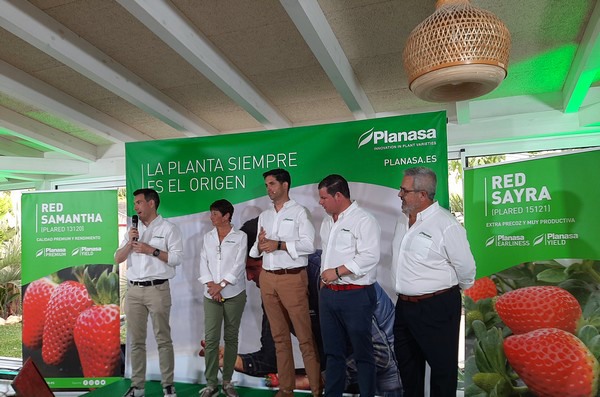
RedSayra: earliness and productivity
The RedSayra is the result of quick breeding work that started in the 2015/16 season. Planasa's new variety stood out from the start because of its earliness, caliber, fruit quality, and ease of harvesting, said Pedro Domínguez, Planasa's short-day strawberry breeder. "The RedSayra is characterized by a very interesting extra-early production and a good end of the season, which is also very important. It has a very linear production curve, with fruits of good size, conical shape, and a very attractive bright red color, as well as a Brix value of around 8 degrees throughout the campaign."
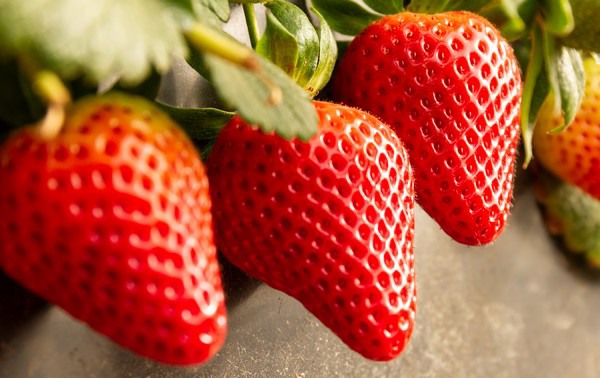
"For the last few years, we have been evaluating part of the program under non-disinfection conditions in soils, and the RedSayra has shown a very good response and good tolerance to powdery mildew. Due to its low vegetative growth, the fruits are very well exposed, which also makes them easy to harvest."
Its extra-earliness allows the fruit to be harvested in December. Rocío Vázquez, Planasa's development manager, said that, as shown in the trials carried out both internally and externally over the last 3 seasons, the variety's extra-early production gives it access to a very favorable marketing window. Up to March 31, the average production of Redsayra amounts to 550 g/plant, with an average weight throughout the campaign of 33.5 grams per fruit and a low percentage of second-rate fruit.
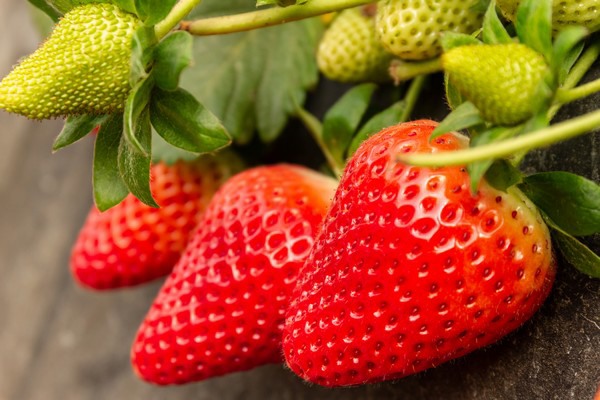
Rocío Vázquez shared RedSayra productivity data from soil and hydroponic trials, where it reached average yields of 61,000 kg/ha and 63,000 kg/ha, respectively.
Red Samantha: yield and quality
The Red Samantha falls into the seasonal/quality segment. Like the RedSayra, it has a good size, with an average fruit weight of close to 32 grams and a very low percentage of second-rate products (only 5%). The fruits have a very homogeneous shape, a very good organoleptic quality, with an average of 9 degrees Brix, and good coloration in winter (a notable characteristic in the trials compared to the control variety), as well as hardiness and great tolerance to vascular soil diseases. In any case, the Red Samantha stands out mainly for its productivity and high fruit quality, said Pedro Domínguez.
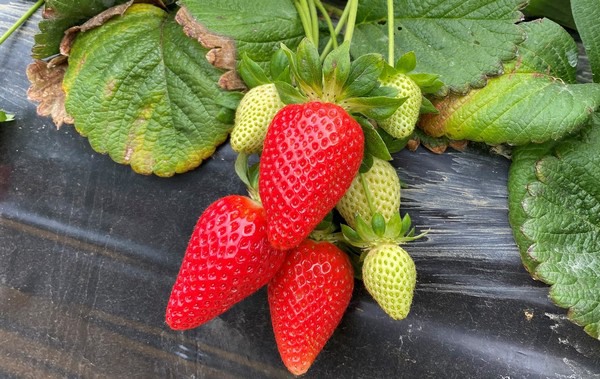
The trials have confirmed that the production process speeds up from week 8, reaching more than 1 kg of fruit per plant by the end of the season, according to data presented by Rocío Vázquez. Internal and external trials have shown the productivity of the Red Samantha to be between 6 and 25% higher than that of the control variety.
In hydroponic cultivation, the difference with the control variety is markedly greater, increasing by 29% and registering a significant average yield of 80,700 kg/ha in this first season with an ongoing comparative trial.
Tastier and more attractive strawberries. And also more profitable
The fruit's organoleptic attributes are just as important as the technical and agronomic characteristics and help determine its success in the market. For this reason, in addition to the internal tastings carried out by Planasa to evaluate factors such as the taste, texture and appearance of the RedSayra and Red Samantha (in which both obtained better results than the control variety in their respective segments), the company has been carrying out tastings with different distributors and leading retailers in Europe for the last three seasons.
"For the RedSayra, we divided the tastings into two periods: until February 28 and from March 1 onwards," said Alfonso López, in charge of new product launches at Planasa. "The RedSayra achieved the most interesting results in this second period, just when there starts to be competition in the market. Tastings in these 3 years have revealed that the RedSayra has 20% more flavor than the control variety, its texture is 15% better and its appearance is 13% superior."
"As for the Red Samantha, the results are also very good. In this case, we have divided the tastings into three periods: up to February 28, from March 1 to April 30, and from May 1 onwards."
"In the early period, the Red Samantha outperformed the control variety by 6% in terms of flavor and texture, standing out in terms of appearance with 29% more. In the mid-season, flavor, which is the core quality of the Red Samantha, was rated 19% higher than that of the control variety, and the texture had an 8% higher rating. In the late season, the flavor drops by 4%, according to these international tastings, but the texture's rating remains 20% better than that of the control, and the score of the appearance is 67% higher."
Lastly, Alfonso López shared an analysis of the economic performance of Planasa's new varieties, looking at the average prices of the fruit over the last 3 campaigns in parallel with the average volumes of RedSayra and Red Samantha in the different stages of the campaign. This served to conclude that, for the grower, the average turnover of the RedSayra amounts to a very interesting 99,400 Euro per hectare, and that of the Red Samantha exceeds 81,500 Euro per hectare.
"I would like to highlight how well the 2 varieties complement each other. The RedSayra becomes productive in December, when prices reach interesting levels, with an average of 4.3 Euro/kilo these last 3 years. It continues to produce very well in January and February, when the Red Samantha starts, after which it continues with a great productivity until the end of the season. The synergy between the two varieties is very impressive."
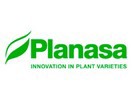 For more information:
For more information:
Planasa
https://planasa.com
